- 한국어
- English
- 日本語
- 中文
- العربية
- Español
- Français
- Deutsch
- Pусский
- Tiếng Việt
- Indonesian
By Honorary Reporter Minnath Azeez from Sri Lanka
Photos = Minnath Azeez, Korea.net's Flicker page, Wikipedia Commons
Seollal (Lunar New Year) starts this year in Korea on Feb. 1 according to the lunar calendar. In Sri Lanka, the Sinhalese New Year (Aluth Avurudu) is celebrated on April 14. The following are traditions and customs each country has to mark its respective observance of the new year.
Traditions for good luck
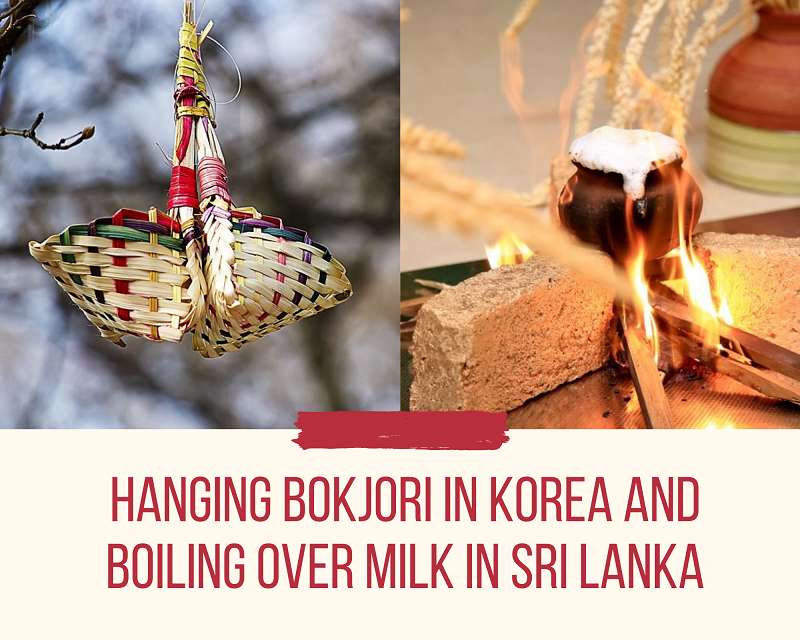
Hanging a bokjori in Korea and boiling milk in a clay pot in Sri Lanka are New Year's traditions believed to bring luck.
In Korea, a traditional custom is to hang a bokjori, a bamboo strainer used to wash rice, on the first morning of the new year for good luck. People in the past usually hanged new ones instead of those they had before, and the belief was that the earlier a bokjori was bought, the more fortune it would bring.
In Sri Lanka, New Year's Day is celebrated by first boiling a pot of milk in the morning in a practice called kiri ithireema (lighting the hearth). A new clay pot is filled with milk and set in a direction that changes each year according to auspicious beliefs. The boiling of the milk is considered a symbol of prosperity.
Traditional food and drinks
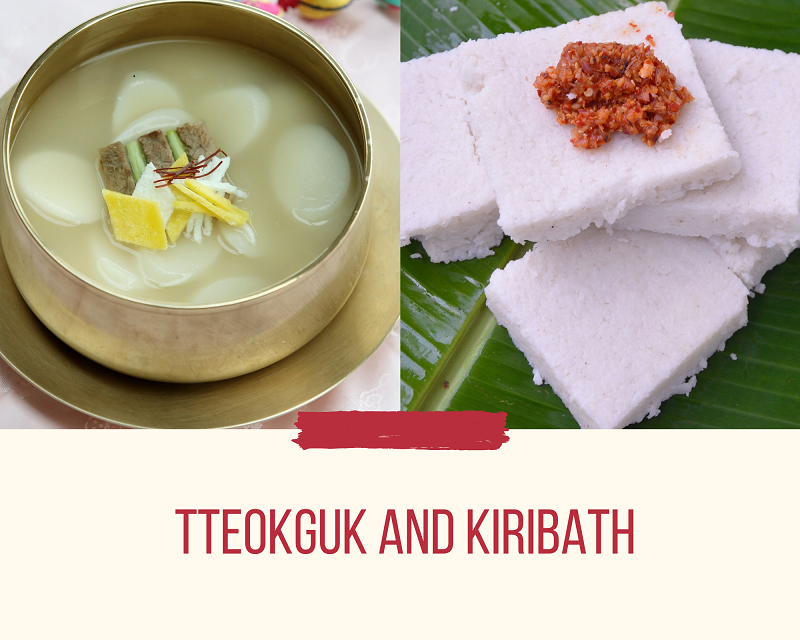
Both Korea and Sri Lanka eat rice-based foods to celebrate the new year.
In Sri Lanka, milk rice is a dish of similar importance in the new year, with coconut milk added to the mix to create solid diamond-shape rice blocks. Drinking milk rice is a common practice on special occasions by Sri Lankans regardless of religion.
Showing respect to older relatives
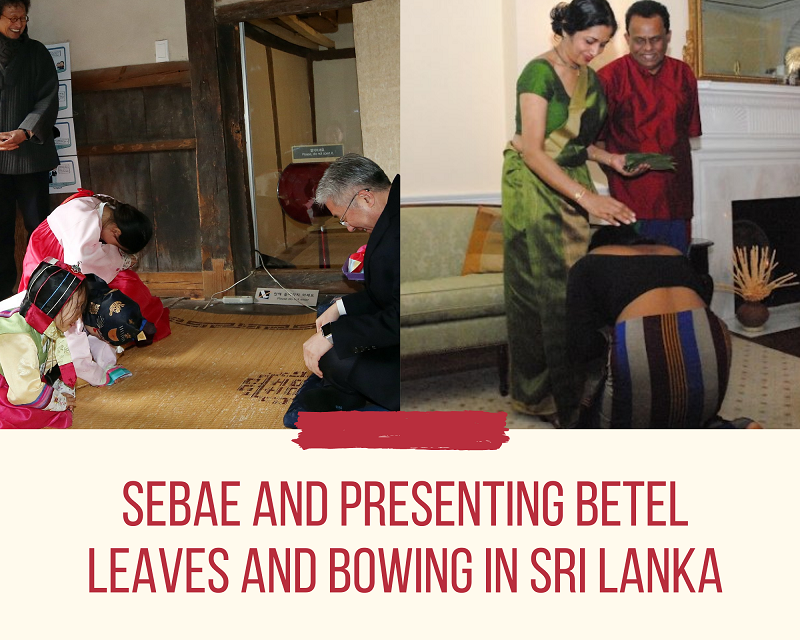
Sebae, or performing a deep bow to elders, in Korea and prostration in Sri Lanka are signs of respect for older relatives.
Respecting elders by bowing to them is a practice that both Sri Lankans and Koreans share. During Seollal, Koreans perform sebae, a tradition of bowing to older relatives. The common Korean greeting for the new year is "Saehae bok mani badeusaeyo" (Lots of luck in the new year), and older family members in return share words of wisdom and give gifts or blessings.
Sri Lanka has a similar tradition. A person hands betel leaves and bows on his or her knees to prostrate to older relatives.
In both countries, the elders return these blessings by giving monetary gifts, called sebaetdon in Korean, marking the first financial transaction of the new year.
New Year's clothing
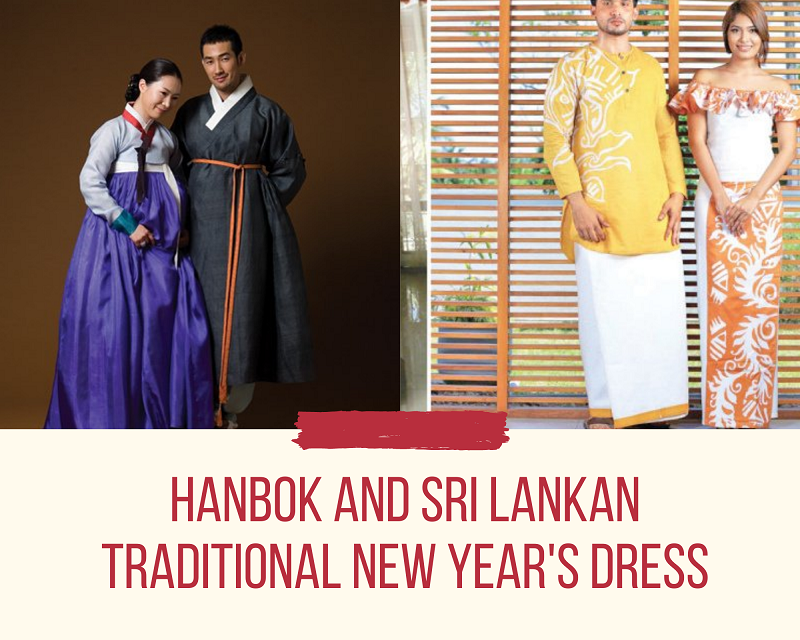
Hanbok is traditionally worn in Korea to mark the new year, while redda, hatta and sarong are worn in Sri Lanka.
During Seollal, most Koreans wear traditional Hanbok in bright and beautiful colors to symbolize hopes for a bright future. Similarly in Sri Lanka, the redda (short top) and hatta (long skirt) are worn by women while men pair a shirt with a batik sarong, or fabric wrapped around the waist similar to a hatta.
Traditional games
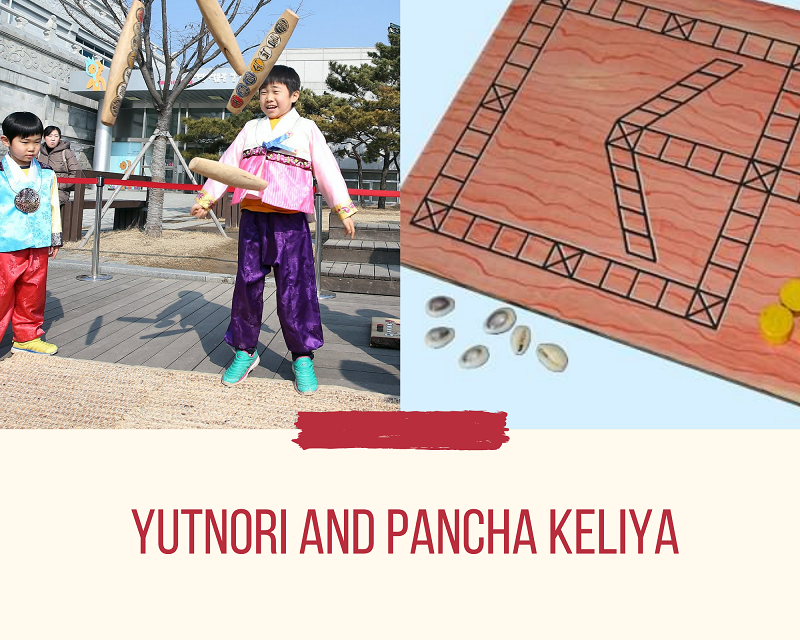
Both countries play traditional games featuring moving pieces across a board.
In Korea, yutnori is the most common game played during Seollal. Four sticks are tossed in the air, and whether they land face up or face down dictates where pieces move around the board. Other games such as jegichagi (kicking a small shuttlecock to keep it from touching the ground) and tuho (throwing arrows into a basket) are also played.
Sri Lanka has pancha keliya, a traditional board game played to mark the new year using a chart, seashells and a coconut shell. Other games include kotta pora (pillow fight), kaba adeema (tug-of-war) and kana mutti bindeema (a pinata-style game called "breaking the pot"). Many of these games are so popular that separate events for them are held in neighborhoods or by companies inviting the public for a chance to win prizes. Some of these events are even shown on TV.
enny0611@korea.kr
*This article is written by a Korea.net Honorary Reporter. Our group of Honorary Reporters are from all around the world, and they share with Korea.net their love and passion for all things Korean.